A nod to the parklet.
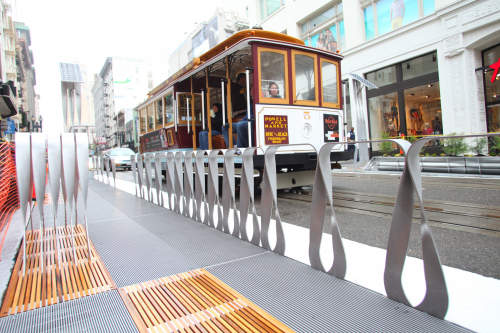 parklet near union square san fransico | sponsored by audi | click > enlarge
parklet near union square san fransico | sponsored by audi | click > enlarge
“The Parklet program is a truly exciting initiative that has people across the city thinking about our streets in a new way. We strongly encourage neighborhood groups and organizations, in addition to storefront business owners, to develop and submit proposals for their communities,” said John Rahaim, Director of the Planning Department (San Francisco 11 May 2011).
The following July the Powell Street Promenade was up and running. The City & County of San Francisco and the Union Square Business Improvement District (BID) had partnered up with Audi and Hood Design Studio to bring a cutting-edge modern design parklet to the city.
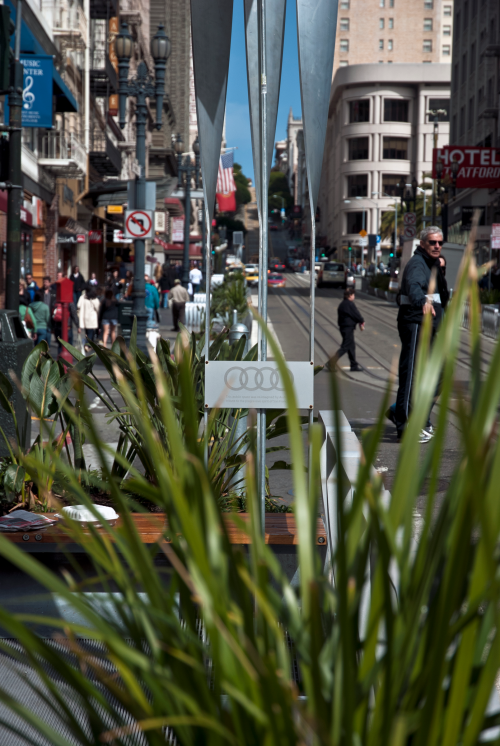 photo > matthew jasperson
photo > matthew jasperson
By repurposing the on-street loading lanes along these two blocks of Powell Street, the Promenade provides six additional feet of continuous pedestrian space and adds amenities such as custom designed aluminum benches, planters, tables, rails, landscaping, bike parking, and other pedestrian-friendly features. Low-energy (LED) lights will illuminate the space through power collected from solar panels. All landscaping is drought tolerant and materials used are designed to be long-lasting and reusable. People utilizing this Promenade will also have access to free Wi-Fi; which was installed as part of the project. Audi used the same principles that define the brand’s innovative approach to car making throughout this process. The Union Square BID will maintain the Promenade and keep it clean and activated.
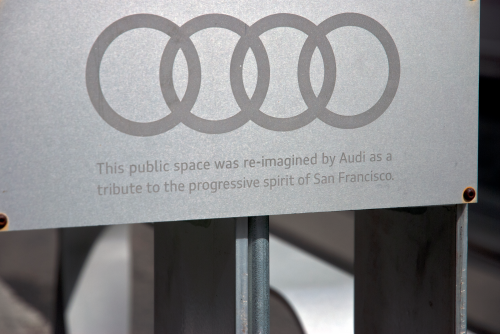
More recently in the news, on the corner of Filbert and Fillmore streets, the Cycle Club San Francisco, London-based biking-gear maker, Rapha and design studio Rebar have deconstructed an iconic Rapha Citroën H-Van. The vans are known as ‘broom wagons’ “as they ‘sweep up’ after the Tour de France. They’d pick up racers who weren’t going to finish the race. Of interest, the parklet concept was born in San Francisco in 2005 as an unofficial activist project by Rebar. Parklets repurpose space designated for on-street parking by building out a platform into the parking lane. By doing so, they create a landscaped space that offers seating and bicycle parking where existing sidewalk space does not allow. They are considered temporary structures.
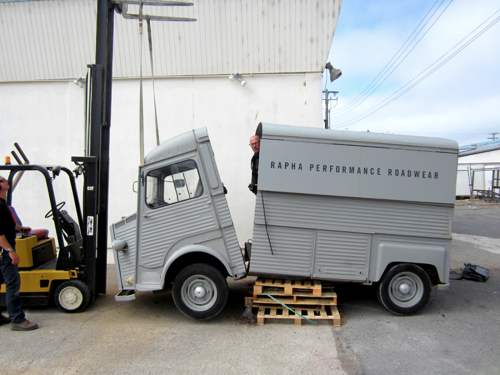
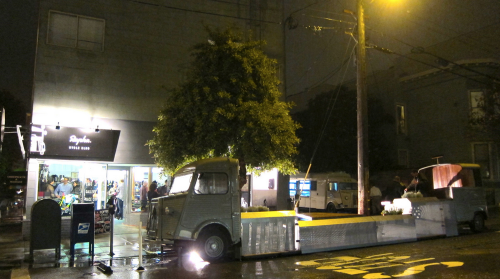 plattyjo- flickr
plattyjo- flickr
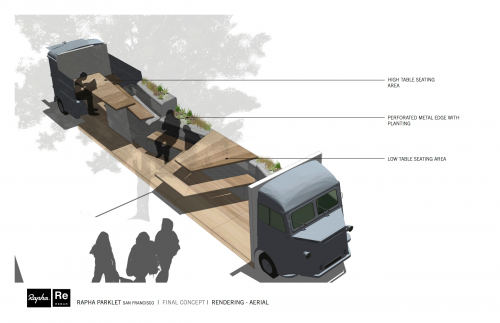
The USA parklet concept really took off in 2010 as cities began thinking of using urban space better. It’s about smart allocation of space, traffic control, dealing with bikes and pedestrians. A poorly conceived parklet adds to the problem. High on city planner’s lists is the issue of the automobile that has little to do with emissions. Parking itself is an issue. A DesignApplause contributer, Phil Patton writes in The New York Times on the topic [ Parking Lots, Ready for a Close-Up and a Spruce-Up ] Let’s checkout parklets around the…world.
marta fry landscape architects
Most cities now issue permits especially for parklets. A look at San Francisco [ apply for parklet ] [ audi ] [ reimaging urban infrastructure ]


